About the Sardine Run
The sardine run ocean safari is our absolute BEST time of the year and for many reasons. It is that time of the year, along our coastline, that has become an obsession, as a specialist diver. It is that time of the year that you simply just do not want to miss out!!!
Our focus is NOT purely around the little silver fish with the great reputation and name of Sardinops Sagax aka sards to locals.
It is an ocean related experience in a league of its’ own for the most incredible diversity of marine life that is in the same place and at the same time.
It is simply not possible to say “when & what” will occur and on what day/time frame and therein lies the magic of this time of the year. For the adventurer, for those seeking to work closely with Nature and to be excited by whatever gets thrown at you during the course of the day. Welcome to The Sardine Run.
General information
The annual migration of Sardine (Sardinops Sagax) from the Agulhas Bank of the Cape, past the Wild Coast and up to the southern portions of KwaZulu Natal to spawn and then return, takes place during South Africa’s winter months i.e. May-August and is a natural phenomenon known as the “Sardine Run”.
The time forgotten rural coastal town of Port St John’s, situated on the magical Pondoland Wild Coast has become one of the most popular destinations from which to experience the sardine run in all its glory. It is also known as the gateway to the sardine run.
Experiencing the sardine run from the Pondoland coast offers not only a naturally beautiful stretch of rugged coastline, but it is also steeped in cultural traditions allowing the Amapondo people to live by and protect their cultural values…. It is a little piece of true Africa.
Driven by forces not yet completely understood, millions upon millions of sardines leave their cool Cape habitat and move east following the cold current, which is in turn driven up from the south by winter storms, normally during the June to August months.
The northwards movement of sardines is facilitated by a cold inshore northward – flowing counter current originating on the Agulhas bank and pushed northwards by these annual winter cold fronts from the south.
This expands the suitable habitat favorable to sardines and can extend as high up the KwaZulu- Natal (KZN) coastline as Durban/Umdloti area, after which the remaining sardines and their fry head out to deeper water and use the Agulhas main stream to return to cooler Cape waters. Sardines prefer a water temperature ranging between 14 C – 20 C and therefore travel according to temperature changes and thermoclines, at times frustrating sardine run operators in judging where the action will pop up.
Port St John’s to Mbotyi in the north, with the continental shelf running close to land, is a prominent location as deep water is close to shore, concentrating both the cold current and the sardines, pushing them closer to shore and condensing the shoals, which in turn attracts a huge variety of major predators.
Huge shoals travel up the coastline feeding in nutrient rich waters with literally thousands of sharks, dolphins, game fish and oceanic birds following the sardines up the coast, constantly harassing and splintering pockets from the main shoals and feeding on these at their own leisure.
This is by far one of the greatest congregations of ocean predators known to man.
What could we possibly see???
As a spectator of the sardine run safari trip, one will often hear the term ‘Bait ball’. Thousands of common dolphins (Delphinus delphis) form super pods of sometimes 100 – 30 000 strong and set off in search of the sardines. The Common dolphin has developed a technique of isolating a shoal of sardines and herding them by using streams of bubbles, sonar and incredible teamwork into tight pockets known as “bait balls”. They also have the amazing ability to time giving birth to their young just before the sardine run, thus allowing the adults to wean and teach hunting tactics to their calves during this incredibly food rich period of the year.
It is truly graceful poetry to observe these incredible animals at work and at play.
In turn, many shark species take advantage of this great feed, occasionally including the Great white shark (Carcharodon carcharias),
Tiger shark ( Galeocerdo cuvier ), Zambezi / Bull shark ( Carcharhinus leucas), but most commonly seen are Copper/Bronze whaler sharks (Carcharhinus brachyurus) and Dusky sharks ( Carcharhinus obscurus ), which when attracted to the activity, arrive sometimes in their hundreds.
At times dolphin and shark can be seen seemingly working together in containing the “bait ball” taking turns in dashing through the food source with mouths open. gulping down as many sardines as possible until not a single one is left.
Most “bait balls” are generally driven to the surface effectively blocking off one avenue of escape.
This in turn allows oceanic bird species to take full advantage of this incredible food source.
Albatrosses (Diomedeidae), Terns (Sternidae) ,Cape Cormorant (Phalacrocorax capensis) and Skua’s to name a few, though the most common of these is the Cape Gannet (Morus capensis).
The Cape Gannet is one of the truly remarkable predators from the world of birds.
These birds have amazing eyesight and have the ability to plummet 30 – 40 meters from the air into the frenzy and amazingly reach depths of 8 – 10m where they animatedly swim around snapping and swallowing any sardine within reach. They are true plunge divers and often upon surfacing comically fight and squabble over any sardine that has been visibly brought to the surface, offering some fantastic photographic opportunities.
Whales – Brydes whales (Balaenoptera edeni) are also seen taking part in the feed by sounding and rocketing up from the depths with mouth open to engulf as much of a “bait ball” as possible. They can be seen on the outskirts or in the middle of the action and do not wait for any permission to start feeding, taking notice of nothing else in doing so. Many a snorkeller has a tale or two of an up close and personal encounter with a Bryde’s whale.
Another totally unrelated migration that takes place during the same period as the sardine movement is that of the Humpback whales (Megaptera novaeangliae) traveling from Antarctic waters northwards to the warmer waters of Mozambique and Tanzania for calving and breeding purposes.
In saying all of the above, this time of the year is NOT about bait balls and sardines only, it is simply the absolute best time to see so much variety in the same place and at the same time. We do not get bait balls every day. On slow action days we will spend time with dolphins, humpback whales and sharks. Our focus of attention is therefore on absolutely everything and anything!!!
Minimum dive qualifications
Recreational scuba divers are to have a recommended minimum certification level of Advanced open water diver and be able to sustain the level of fitness required on the sardine run. However an Open Water diver qualification linked to sufficient experience in the ocean realm will be accepted upon proof of such experience. It must be understood that this time of the year is a high risk and fast action event, resulting in this trip being rated as “strenuous” and it is often done in limited visibility. It is not the time of the year to be trying out new dive equipment. Scuba divers need to be able to demonstrate good buoyancy control as action can be anything between 15m and the surface, in a water column depth of 50-100m. Dive guides are not in place to haul divers descending down to great depths back to the action. It is expected that all scuba divers will have sufficient experience to practice good buoyancy control whilst underwater and this is a requirement.
Sharks are often encountered and intense and fast moving action is the order of the day when predator meets sardine.
All that take part with in-water activities must be totally comfortable with the above scenario.
This time of the year is not purely about being on scuba and at least 75% of in-water activity is done on snorkel as a lot of action is fast paced and one cannot keep up with it on scuba., which is why snorkel and scuba equipment is taken on the boat each day. It allows us to capitalize on slow and fast moving action.
A typical day on the sardine run ocean safari trip
Daily outings last for approximately 6-8 hours depending on sea conditions and the amount of action about. With the action being fast paced in conjunction with variable sea conditions, long boat rides and the whole day out at sea, outings can prove strenuous to some, therefore it is recommended that clients be relatively fit.
Departure time is usually 06h30 and return time depends on the action on the day. We are usually the last boats in each day, giving our clients a full day out at sea, capitalizing on whatever Nature has to offer.
Each morning we will head out from the Umzimvubu River, Port St John’s and after a typical and highly exciting African surf launch, crew will start scouting for all types of action, from whales, dolphins and ocean bird life action to tell tale signs of sardine type action. Sardine type activity is usually sighted from large flocks of cape gannet sightings or by the more trusted large pods of common dolphin activity. Our communication network with others is vast. Our knowledge of “hiding” places also comes into play here and all avenues are explored to find action for you.
Once action has been located by our eye in the sky or by our skippers, our experienced crew will determine whether the action is fast moving, necessitating snorkel based viewing, or more static, whereby we can go straight onto scuba equipment for those wishing to use scuba gear. First hand action will be experienced by snorkellers, divers and boat based passengers, which ensures an exciting day out for everyone, where no one is left out of all the excitement that Nature brings with her.
About the boats & crew
- We make use of 7.2m & 8m Feral RIB’s powered by 2 x 85hp Yamaha outboard motors.
- Each vessel is licensed to carry 12 passengers, including skipper & guide, however for this time of the year and the length of time that we spend out at sea, we limit our carrying capacity to a maximum of 8 people, for space and comfort purposes.
- Our boats are SAMSA certified and all vessels carry the required safety equipment inclusive of oxygen, trauma kits and communication devices.
- Highly experienced and fully qualified sardine run skippers and dive guides are on board each vessel to ensure your safety and make your trip as informative and fun as possible.
What to bring on the boat each day
- Sun protection i.e. hat / sunglasses / sun block
- Your own waterproof jacket is not necessarily a requirement as each boat is equipped with PVC marine type jackets with built in hoods
- waterproof bag for anything that you wish to bring onto the boat. Please note that space is very limited so please choose something relatively small and if you are in a group, sharing a larger bag would be appreciated and advisable.
- camera / video equipment / binoculars (in a waterproof bag).
Extra notes / notes for scuba divers
- Due to our typical African surf launch and beaching of boat techniques, along with the possibility of uncomfortable and choppy sea conditions at times, we do not advise that those with limited mobility or frailty take part in boat activities of this nature unless having done so previously.
- The sardine run is safe to enjoy, as a passenger, by most, however there is certain effort required by everyone on board.
- As a snorkeller or diver, the action can be incredibly fast paced and at times, chaotic as predator chases prey, meaning that a certain level of fitness and attention is required to thoroughly enjoy each and every encounter.
- Dive guides and skippers will give instructions throughout the day as to procedures and rules for any particular action at the time and these must please be adhered to.
- Divers will be asked to produce their certification cards / logbooks on arrival in Port St John’s and prior to any ocean activities taking place.
- Check out dives will be done as soon as possible on the first day. This is for your own safety and comfort, to enable you to tweak equipment, familiarize yourself with local conditions ahead of all the action, where there is little or no time to tweak equipment.
- If our day at sea is cancelled due to the weather or sea conditions, we will arrange local activities for you to take in some of the highlights of the area, of which there are many. Port St John’s is fairly remote and rural but it does offer some great hikes, view points, beach walks and a river cruise is a must do. The Sardine Run ocean experience is operated by all operators as an expedition and because costs don’t change if we can’t launch due to the surf conditions or the weather, we can’t offer refunds.
Dive equipment
It is advisable for divers to bring their own wetsuit, mask/snorkel, fins, BCD & Regulators.
Cylinders & weights / weight belts will be supplied on arrival. We make use of 12ltr & 10ltr steel cylinders.
Equipment hire must be pre-booked and arranged on booking your trip with us.
Rental gear rate is R 90.00 per item per day OR R 450.00 for full equipment rental per day.
Our rental gear consists of:-
- Fins – closed heel fins ranging in size from 3½ – 4½ (36-37), to a maximum fin size of 11 – 12 (46-47).
- Masks – black silicone
- Wetsuits – 5mm thickness, full suits – size range from XS – XXL.
- BCD & Regulator – Aqualung Wave / Calypso DIN
- Our dive cylinders can convert to DIN or A Clamp regulators if you are bringing your own.
If your size does not fit into what is on offer (above), it is highly recommended that you supply your own.
With water temperatures ranging between 14 – 22 degrees C, a wetsuit thickness of 5-7mm with a hood is sufficient. Dive socks and gloves are recommended.
Trip staff will be on hand to assist with carrying of equipment, filling of cylinders etc.
It is advisable to bring your own SMB (surface marker buoy) to keep inside your BCD pocket, if you are bringing your own equipment along.
Rinsing facilities are available on site.
Weather & ocean conditions
The best weather and ocean conditions on the Wild Coast happen to be during the winter periods. A little rain and overcast conditions can be expected on some days, although normally good weather prevails. Sea conditions can range from glassy smooth to white capped seas……………exciting and at times strenuous.
Our team ensures SAFETY FIRST at all times and all decisions are based on this.
AIR temperature ranges between 14 – 25 ºC (58 – 76 ºF) and it is often colder in the early mornings and evenings.
WATER temperature ranges between 15 – 22 ºC (59 – 71 ºF)
VISIBILITY ranges between 2 – 30m and as a safety precaution, in water activities are only conducted with conditions offering us visibility of 5m plus.
GENERAL
Airport transfers
Please bear in mind that all international flights arrive and depart through three airports in South Africa viz. Cape Town international airport, King Shaka international airport in Durban and OR Thambo international airport in Johannesburg. From there a domestic flight to either Durban, Umtata or East London is required.
Transfers can be arranged from these airports and rates are a per vehicle rate and not a per person rate.
Umtata airport is our preferred airport as it is the closest to Port St John’s. There is a direct flight ex Johannesburg airport to Umtata.
Umtata airport – Port St John’s (4- seat vehicle) @ R 1580.00.00 one way – without trailer
Umtata airport – Port St John’s (11 -15 seat vehicle) @ R 2225.00 one way – without trailer
Trailer R 170.00 one- way
Distance to travel to Port St John’s
For ease of planning, King Shaka international airport in Durban (KSIA) is approximately a 6 hour drive to Port St John’s.
Umtata airport (UTT), as a domestic connection from Johannesburg only via SA Airlink is approximately 1.5 hour drive to Port St John’s and is highly recommended due to the proximity and short travel time. There are currently 4 daily flights in and out ex Johannesburg.
East London airport, as a domestic connection, is approximately 4.5 hours drive to Port St John’s.
Insurance
Travel insurance is highly recommended for all guests and is not included in any of our packages. This must be organised in your country of origin.
Booking terms & conditions / payment methods
- Credit card or bank transfer
- Online payment via Pay Gate link
- Payment via WISE
- A 30% non refundable deposit is required to secure a booking
- The balance of payment is due no later than 6 weeks prior to trip start date
- If the final payment is not received timeously, we reserve the right to cancel the reservation without notice
Cancellation policy
- 60 – 120 days – 50% payable
- 30 – 60 days – 75% payable
- 30 days or less – 100% payable
2024 package options
We are able to offer many packages to suit client needs and the below packages represent just a few of these.
Accommodation is at our preferred establishment Port St Johns’s River Lodge. However we are happy to assist you if you would prefer to arrange your own accommodation.
Port St John’s River Lodge 3***- (Dinner, Bed & Breakfast)
| 10N 9D | 9N 8D | 8N 7D | 7N 6D | 6N 5D | 5N 4D | 4N 3D |
| R 74 932.00 pp sharing | R 66 821.00 pp sharing | R 58 710.00 pp sharing | R 50 599.00 pp sharing | R 42 487.00 pp sharing | R 34 376.00 pp sharing | R 26 265.00 pp sharing |
| R 78 795.00 single | R 70 297.00 single | R 61 800.00 single | R 53 302.00 single | R 44 805.00 single | R 36 307.00 single | R 27 810.00 single |
Rates include:-
- *** night accommodation
- *** ocean days (weather permitting)
- Fully exclusive to our clients aerial support (spotting) with our fixed wing aircraft & pilot
- Packed boat refreshments (lunch)
- Cylinder / air
- Weights / weight belt
- Diver permit
- Suitably qualified sardine run skipper & in-water dive guide
Rates exclude:-
- Flights in the aircraft – booked on the day and subject to availability and space.
- Drinks / items of a personal nature
- Additional chargeable land based activities i.e. guided hikes & afternoon aircraft flights
- Dive gear rental – must be pre-booked as we carry limited stock
- Transfers – can be organized ex Durban, Umtata or East London airports
- Dive / travel insurance
- Air fares / taxes
- Passports / visas
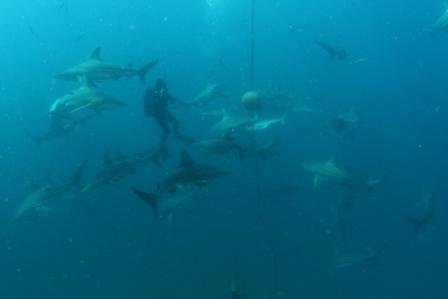












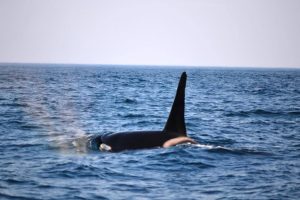

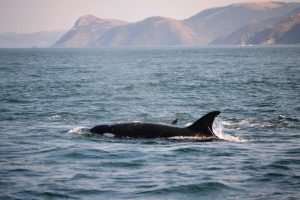



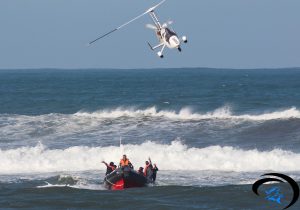
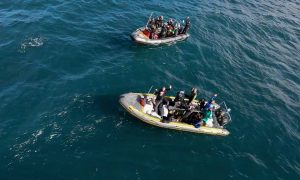
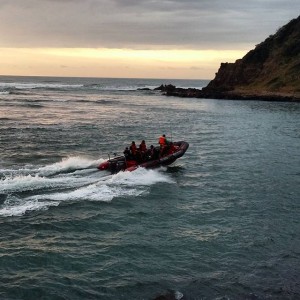
You must be logged in to post a comment.